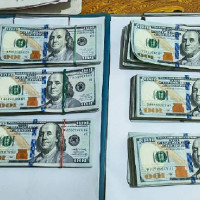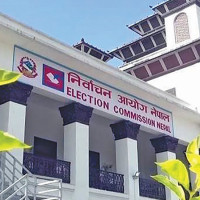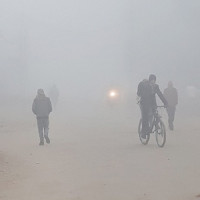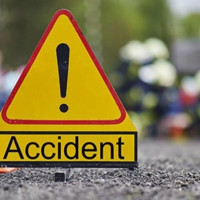- Wednesday, 14 January 2026
Nepal’s transition and transformation in photos
Kathmandu, May 10: They say a picture is worth a thousand words. Well presently, Gorkhapatra Corporation (GC) has over 60 on display at its ongoing exhibition.
On the occasion of its 61st anniversary and its flagship publication, Gorkhapatra, entering the 123rd year of publication, GC has put on display more than five dozen photographs taken by its photographers between 1973 and 2003.
An exception is a famous photograph of the then Prime Minister Girija Prasad Koirala and the leader of the rebelling CPN (Maoist) and present Prime Minister Pushpa Kamal Dahal ‘Prachanda’ shaking hands after signing the Comprehensive Peace Accord in 2006.
These black-and-white images tell a colourful tale of Nepal’s transformation over the three decades. There are pictures that encapsulate iconic moments in the first People’s Movement of 1990 which saw the people take on the might of the authoritarian Panchayati state and win, photos that capture the beginning of many now-prominent politicians’ careers, images that show prominent Maoist leaders before the People’s War and an introduction to leaders like Madan Bhandari and Manmohan Adhikari that this generation had not got.
The lenses of the Corporation’s veteran photographers, the likes of Gopal Chitrakar, Binduraj Singh Suwal, Rameshwor Kayastha, Bhim Gurung, Bharat Deurali, Natikaji Maharjan, Rajendra Chitrakar, Shekhar Chaulagain and Ramesh KC, also caught tragedies and disasters. The 1988 stampede at Kathmandu’s Dashrath Stadium that killed 93 people, the earthquake that hit eastern Nepal the same year and the blockade India imposed on Nepal in 1989.
The exhibition began on Sunday on the occasion of GC’s anniversary. On the first day, the photographs were displayed at the Rastriya Sabha Griha, Pradarshani Marg where they were viewed by Prime Minister Prachanda, Minister for Communication and Information Technology Rekha Sharma and the ministry’s Secretary Krishna Bahadur Raut, among others.
Since Monday though, the exhibition has been going on at the GC office. According to the Corporation, visitors will be able to come and see the photos every day from 11 am to 10 pm till May 22.
However, a lot of hard work went into making this event possible. According to Ram Prasad Humagai, head of Gorkhapatra’s Photography Department, photo archiving was almost non-existent at the Corporation. “Some negatives were in sacks while others were in random corners,”
he said. “Three staff of the cleaning department spent 10 days rescuing the reel from filth and cleaning them.”
But then came the question – how to digitise them? Machines that scan photo reels are a rare commodity in today’s age of digital memory cards. Nevertheless, after much effort, the photography team managed to locate and procure a scanner.
That raised another challenge – modern computers do not support negative scanners. “With technical support, GC managed to connect a CPU that supported the scanner and the photography team scanned 500 photos,” Humagai informed. In addition to printed photos displayed in frames, the photography department team has also set up a slideshow to project the old pictures during the exhibition.









-original-thumb.jpg)




